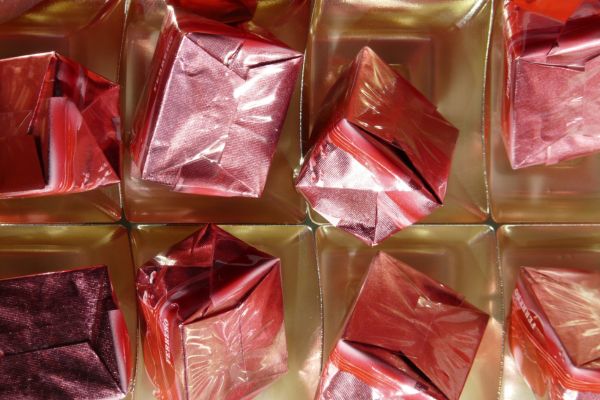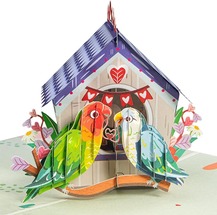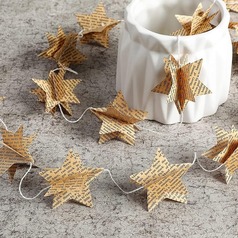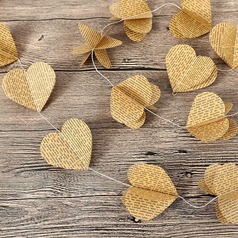Valentine’s Day is a time to express love and affection for those special people in our lives. While showering our loved ones with gifts and creating memorable experiences, it’s essential to be mindful of the environmental impact our celebrations may have. Embracing a sustainable Valentine’s Day demonstrates a commitment to the planet and adds a unique and thoughtful touch to your expressions of love.
In this guide, we’ll explore various ways to celebrate a lower-impact and less wasteful and more sustainable Valentine’s Day.
History of Valentine’s Day
Valentine’s Day, celebrated on February 14th, has a rich history that traces its origins to ancient Rome. The day is named after St. Valentine, a Christian martyr who lived during the Roman Empire’s rule.
While there are multiple legends surrounding St. Valentine, one popular belief is that he defied Emperor Claudius II’s ban on marriages for young men, secretly performing weddings for couples in love. Over time, Valentine’s Day evolved into a celebration of love and affection. In the Middle Ages, it became associated with romantic courtly love, and by the 18th century, exchanging handwritten notes and small tokens of affection became a common practice.
Today, Valentine’s Day is celebrated globally by exchanging cards, flowers, and gifts, symbolizing love and devotion.
The Environmental Impact of Valentine’s Day
Regretfully, despite the purpose of Valentine’s Day being based around our love for one another, celebrating it has a significant negative impact on the environment. The production and packaging associated with Valentine’s Day, especially the excessive use of plastic, generates a significant amount of waste and contributes to plastic pollution.
Waste 360 reports that 198 million flowers, 180 million cards, and 58 million pounds of chocolate are gifted on Valentine’s Day alone in the United States alone. That’s an absurd amount of paper, plastic and aluminum for the packaging.
So why not be a more conscious consumer and consider these statistics when choosing how to show your love this Valentine’s Day?
Flowers:
During Valentine’s, the floral industry experiences a surge in demand for roses and other blooms. However, large-scale flower cultivation often involves the use of pesticides and fertilizers, and the transportation of flowers over long distances results in a significant carbon footprint. Additionally, a lot of plastic is associated with cut flowers, from the floral foam used to hold arrangements in place and keep them fresh to the non-recyclable plastic film used for wrapping flowers.
If you want to learn more about the Floral Industry, its impacts, and what needs to happen to make it more sustainable, check out The Sustainable Floristry Network.
How can you make a difference? Give flowers a miss this Valentine’s Day, or perhaps pick some flowers from your garden instead. Seek out locally sourced flowers or sustainable florists; The Sustainable Floristry Network has started a Directory to help you find one. To help reduce packaging consider taking a reusable bag or vase to the florist and avoiding the single-use plastic film.
Valentine’s Cards and Gifts:
Every year, almost a billion Valentine’s Day cards and messages are sent worldwide. However, every message, whether written on a card made of paper or paired with a flower, uses materials like metal, plastic, and paper, all of which impact the environment. The following is a list of some of the worst offenders.
Glitter: Avoid cards and gifts with glitter on them. Glitter is a form of microplastic, as most is made from plastic. It is already small and so can spread throughout the environment, lasting for hundreds of years.
Balloons: Balloons, especially those filled with helium, pose significant environmental threats. When released, balloons can become litter, causing harm to wildlife and ecosystems, as they take years to break down, contributing to pollution and potentially being ingested by animals. Plus, helium is a finite resource, and its extraction and production contribute to environmental degradation.
Novelty Gifts: Despite how cute they seem at the time, many Valentine’s Day gifts can be described as single-use. They have no use and end up in a draw, maybe for a few years, and then are tossed in the bin. Most of these items are made from plastic and most of it is not recyclable. There are many reasons why this is the case; it may be because of the type of plastic used or because the plastic is glued and mixed with other materials, making it too difficult to separate.
Chocolates: Over 36 million heart-shaped boxes of chocolate packaged in plastic and cardboard are sold each year and end up in the trash. Although the outer box is often made from cardboard and is usually recyclable, sometimes there are so many embellishments on it that it can’t be recycled.
Then, there’s the inner tray that holds the chocolates. Typically, this is made from a thin plastic, which is not accepted in most curbside recycling services. The chocolates themselves may even be individually wrapped in plastic or aluminum.

There is so much packaging for something that probably won’t last too long (at least in my house, they don’t!). Fortunately, some chocolate companies are shifting to a biodegradable insert. If you want to buy chocolates seek out those with the least amount of packaging and preferably made from cardboard or aluminum wrapping that can be recycled.
How to Express Your Love on Valentine’s Day Without The Waste
Making mindful choices in gift-giving practices can contribute to a more sustainable Valentine’s Day.
To reduce the environmental impact of Valentine’s Day, opt for eco-friendly and recyclable products or consider alternative gifts with a lower environmental footprint, such as experiences or homemade items.
Choose Experiences Over Things
Opt for experiences that create lasting memories rather than physical gifts. Here are some ideas to get you thinking:
- Plan a nature hike
- Organize a picnic
- Book a cooking class
- Plan a weekend getaway
- Go to a museum
- Volunteer together with your favorite charity
- Buy tickets to a show
- Take your loved one to their favorite restaurant
- Reminisce about your life together by looking through photos
- Take dancing lessons
- Spend an evening planning your next holiday together
- Plan a photoshoot
- Play a board game
- Do a cocktail class
- Express your love by donating to a cause that aligns with your loved one’s values.
Creating memories together not only reduces waste but also strengthens your connection.

Choose To Be A More Conscious Shopper
You can make a big impact by pausing for a moment to think about what you are buying. The tradition of giving gifts on Valentine’s Day can be both meaningful and sustainable. Here are some great examples of better options to show your love.
Recycled Gifts: If you want inspiration for recycled Valentine’s Day gifts, look at our Recycled Brand Directory. There are plenty of recycled products perfect for that special person in your life.
Plant-based Gifts: Instead of traditional flowers with a high carbon footprint due to transportation, consider potted plants or succulents. These living gifts last longer and contribute to indoor air quality.
Upcycled Jewelry: Choose jewelry made from recycled or upcycled materials. Many artisans and designers create beautiful pieces using reclaimed metals or repurposed materials, providing a unique and sustainable alternative.
Sustainable Chocolate and Treats: For a more sustainable Valentine’s Day, opt for brands that prioritize ethical sourcing, fair trade practices, and sustainable packaging. The best packaging will be made from recycled materials, but second to this is packaging made from paper, cardboard, or aluminum foil. Try to avoid chocolates packaged in molded plastic or individually wrapped in plastic, as these are the least likely to be recyclable.
Or why not consider making your own treats instead?

DIY and Handmade Cards: Expressing your feelings doesn’t always require store-bought cards. Consider making your own DIY cards using recycled materials or materials from your garden. Get creative with heartfelt messages and personalized touches that show you put thought and effort into the gesture.
If you don’t have time to make your own cards, these recycled pop-up gift cards are a great option.
Lower Your Impact On Valentine’s Day
Here are a few other ways to lower your impact and have a more sustainable Valentine’s Day:
Reduce Waste: Choose local and organic ingredients if you plan to celebrate with a romantic picnic. Minimize waste by using reusable dinnerware, cloth napkins, and glassware instead of disposable options. If you opt for takeout, ensure the packaging is eco-friendly, or bring your own reusable containers.
Support Local Businesses: When shopping for gifts or planning activities, prioritize local businesses. Supporting local artisans, restaurants, and shops not only boosts the local economy but also reduces the carbon footprint associated with long-distance shipping.
Waste-Free Wrapping: Traditional wrapping paper contributes to a significant amount of waste. Opt for reusable options like fabric gift wraps, scarves, or even old maps. If you prefer to use wrap, choose paper without embellishments like glitter or ribbons. Ask at the store to make sure the wrap is actually paper and not plastic masquerading as paper.
Choose Your Decorations Wisely: If you’re decorating your space for Valentine’s Day, choose sustainable and reusable options. Avoid single-use decorations that contribute to landfill waste. Consider using items like fabric banners, recycled paper decorations, or LED lights that consume less energy. The added benefit is that these items can be used over and over again.
I love these recycled paper decorations made from books. If you have time, they would be easy to make yourself; simply pick up a book at your local thrift store, cut the shapes, and attach them to string.
Recycling on Valentine’s Day
Although you may not always be in control of the gifts you receive, you do have power over how you dispose of them. Remember to check your recycling rules and follow this guide:
Paper and cardboard Can be recycled in your curbside recycling bin if you have access to one. Make sure it is dry and clean. Check if it is plastic or paper by tearing it, if it is hard to tear then it is likely plastic or plastic-coated paper. This may not be accepted for recycling, so be sure to check. No wax paper or parchment paper.
Metal: If your chocolates are wrapped in foil, roll them into a ball the size of a baseball and place them in your curbside recycling.
Plastic: Much of the plastic packaging associated with Valentine’s Day is not recyclable. If you have access to a soft plastics recycling service, that will help. Even so, unfortunately, a lot of the plastic film can be layered with metal or paper, making it unrecyclable. Check what is accepted carefully.
As mentioned above, the inserts in many boxes of chocolates are made of plastic and are not recyclable. These will need to be placed in your general waste bin.
Most novelty gifts, like soft toys or hearts, balloons, or other items, are made of various types of plastic. These cannot be recycled and belong in your general waste bin. It’s best to avoid them, but if you have one, try to reuse it next year or donate it if possible.
Glass: Curbside services only accept glass bottles and jars, so any other types of glass, like those from candles or vases, will need to be placed in your general waste bin.
Educate and Share
Spread the sustainability message by sharing your sustainable Valentine’s Day celebration on social media. Encourage others to adopt green practices and inspire them to make mindful choices in their celebrations as well.
Celebrating Valentine’s Day sustainably not only aligns with the growing global consciousness towards environmental responsibility but also adds a deeper layer of thoughtfulness to your expressions of love.
By making conscious choices in gift-giving, dining, and overall celebration, you contribute to a more sustainable and compassionate world while creating lasting memories with your loved ones. This Valentine’s Day, let love be the driving force behind your commitment to a greener and more eco-friendly celebration.


















